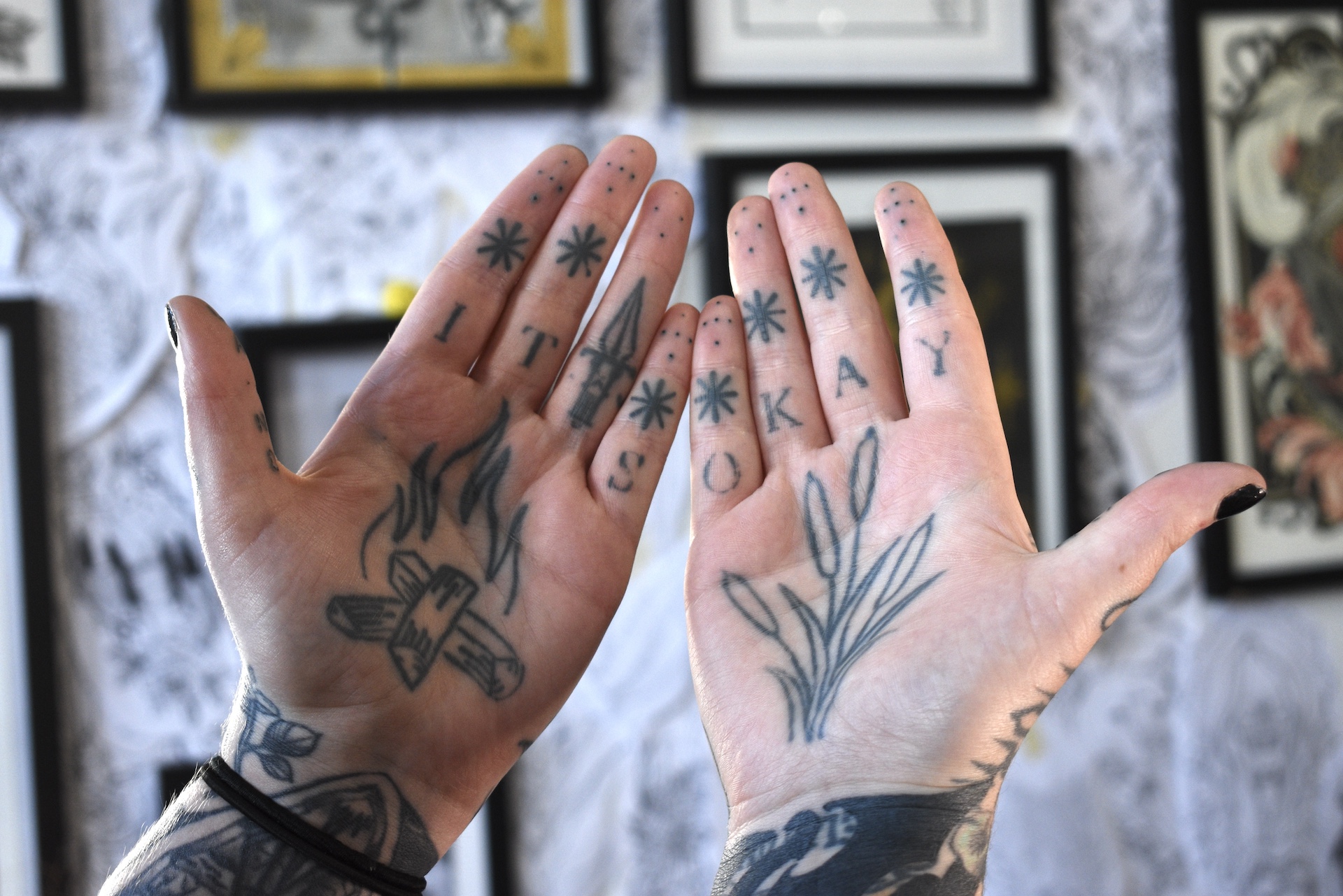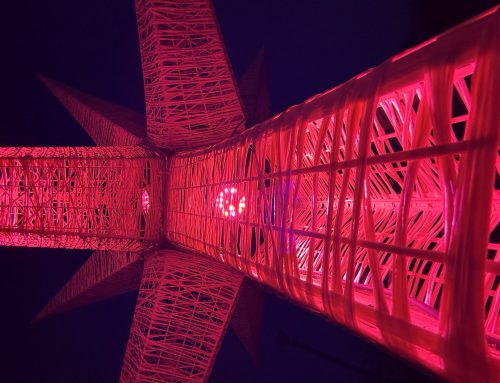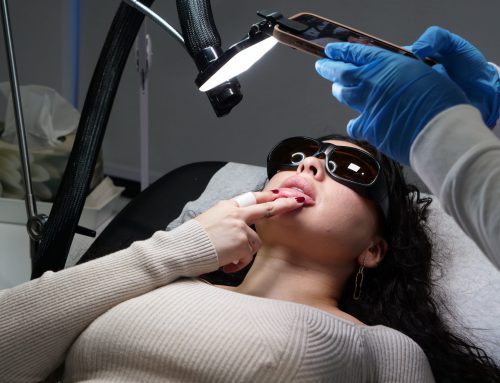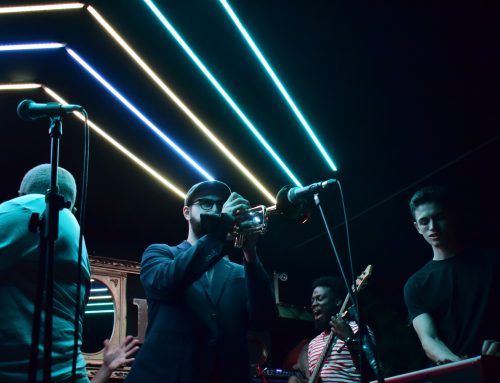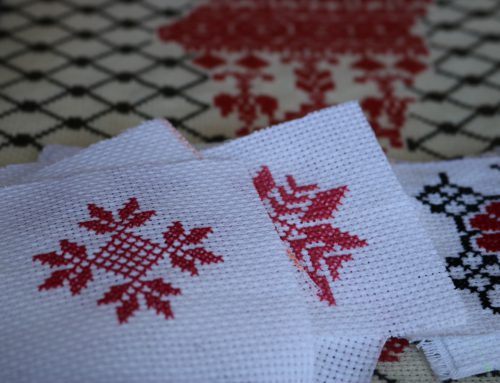BY Mackenzie Sanche & Olivia Integlia
As a tattoo apprentice, Lindsay “Phylo” Philomene was taught that certain colours didn’t work on melanated skin. She was told that artists needed to press harder for the pigment to show. She even recalls working at tattoo studios where people of colour were often refused.
“After all these years of tattooing, I realized that everything that I’ve been taught about how to work with melanated skin, even if I’m a person of colour myself, was just not true,” she says.
Fast-forward a few years. Laughter and music trickle down the hallway from Hawthorn tattoo studio in Mont-Royal, which she owns with artist Terry Dactel. Soft, natural light dances over the dark lines of their artwork, which covers the walls like ivy.
Dactel and Phylo started Hawthorn in 2021. They say it was the first Indigenous and Black-owned tattoo studio in Montreal.
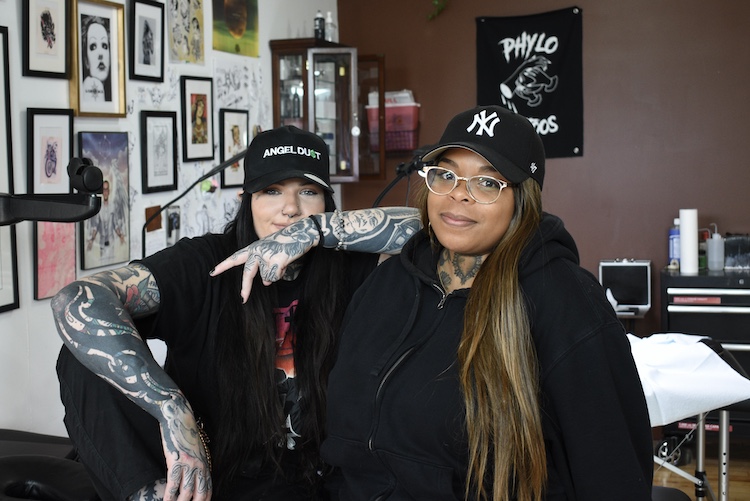
Terry Dactel and Lindsay Philomene are the owners of Hawthorn tattoo studio in Mont-Royal. Photo by Mackenzie Sanche.
According to a recent study, more than 70 per cent of tattooists are men and well over half are white. Hawthorn studio aims to increase the autonomy of Black, Indigenous and people of colour (BIPOC). They also intend for their BIPOC, queer, disabled and women clients to feel safe.
As a Wendat artist, Dactel explains that entering the tattoo industry as a BIPOC artist is difficult. She frequently faced racism and discrimination during her apprenticeships because of negative preconceptions about Indigenous people.
“It’s been a lot of hard work, a lot of sheer determination and willpower, a lot of mental breakdowns and a lot of uphill battles,” she says.
Hawthorn is not only a safe space for them, but also for their two apprentices. It provides a refuge for diverse clients from discrimination, racism, ableism, sexism, fatphobia, and homophobia.
Tattoo studios in Tiohtà:ke/Montreal that identify as safe spaces for marginalized communities. Map by Mackenzie Sanche.
While the client is paying for a service that the artist offers, getting a tattoo is an extremely vulnerable interaction, according to Nao Loiselle-Canuel, a non-binary and trans resident artist at Interlude Studio.
“When you’re from a marginalized community, it’s important to be in a space where your marginalization is understood, where that difference is honoured and welcomed in a safe space,” they say.
They explain that tattooing comes with a consensual, but unique power imbalance. “The person agrees to suffer and to bear your art forever,” Loiselle-Canuel says. “When someone wants to receive that, the way I treat them has to reciprocate that respect.”
They ensure their clients feel comfortable by focusing on hygiene, sanitation, being fully present and emotionally available, and adopting a trauma-informed approach that emphasizes consent and communication.
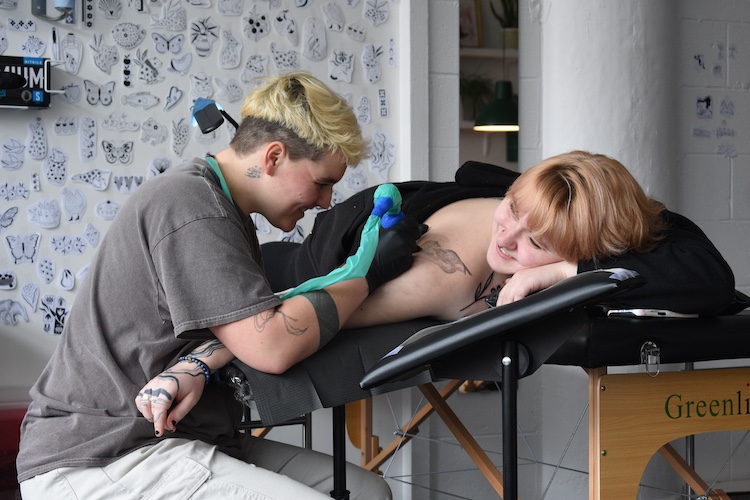
Nao Loiselle-Canuel laughs with client Gaëlle Pépin-Blondin as they tattoo them at Interlude Studio. Photo by Mackenzie Sanche.
Adrenaline Ouest caucasian tattoo artist Steve Gehlsen has been tattooing for 23 years and says he has seen a massive industry change in the last 10 years.
“I think the old school is gone,” he says, adding that the industry is adapting to a new clientele that expects more from their tattooing experience.
“It’s not just like 30-40 years ago, where it’s the typical biker-looking person that would get a tattoo,” Gehlsen says, adding that about 70 per cent of his clients today are women.
Gehlsen says he’s been learning concepts like the use of preferred pronouns from younger staff and clients at Adrenaline Ouest to be more inclusive. He believes artists need to be more open and sensitive to the people who walk into their studio nowadays.
“The difference is on a personal level, to learn anti-colonial and trauma-informed approaches,” Loiselle-Canuel emphasizes. They say not many studios will enforce inclusive internal policies, like anti-harassment or anti-discrimination policies.
“[The industry] is still very underground and each for their own,” Loiselle-Canuel says. “Some know what the best practices should be, and still decide not to do it.”
Loiselle-Canuel says it’s crucial to acknowledge one’s privilege and the various systems of oppression at work if we ever want to make the industry safe and inclusive.
“These alternative spaces are being created in response to a lack of inclusivity in the industry, which can be dangerous for some.”
There is no regulation in place in Quebec for the tattoo industry—except for tattooing minors—even if experts have been requesting it for years. In contrast, other provinces in Canada have their own regulations regarding registration, consent, infection prevention and other ministry-stated health standards.
Artists challenge traditional tattoo practices by choosing the DIY route, causing some concerns about health and safety. Video by Olivia Integlia.
There is currently no professional tattoo organization that is recognized by the Quebec government to regulate and standardize health and safety in this industry, much less any diversity-related best practices. In fact, Gehlsen and Adrenaline Ouest shop owner Christopher Saliba were never inspected. They say they must police health hazards and policies internally.
Queer artist Kae Nine Fingers runs Catalpa Studio, which they co-founded with artist Luci Tattoos in 2018.
Kae works from an intersectional feminist lens, and their studio enforces unique in-house policies that they share with new clients prior to their appointment—this includes their tattooing policy, their general appointment rules, and their sliding scale policy.
The sliding scale policy is an option to adjust pricing to counter the financial barriers that prevent some people from accessing tattoos.
“Access to wealth is something that obviously not everybody in our community has,” they explain. “It’s really important to me that we try to level the playing field a bit.”
“Tattooing is political,” Kae says. “For some people, tattooing can be a challenging process, but it can also be really empowering.”
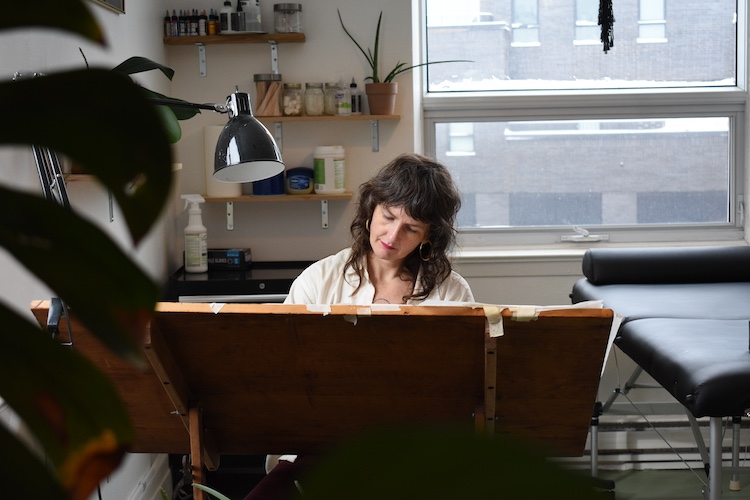
Owner of Catalpa Studio Kae Nine Fingers works on tattoo designs at their drawing desk. Photo by Mackenzie Sanche.
Desirability, politics, and systemic oppression can complicate people’s relationships with their bodies, according to Kae. Nonetheless, they believe it’s impossible to create a fully safe space for everyone.
“One can never understand the full complexity of any person’s experience, nor predict what could activate a feeling of lack of safety for an individual,” they say.
While many artists are working toward a cultural shift in the industry, undeniable issues remain according to Dactel. She feels she has a responsibility to keep Indigenous clients safe from unwelcoming studios, since she can enter these spaces “as a double-agent” because of her paler skin.
This allows Dactel to caution her community about such places. “I have that on my shoulders, but I wouldn’t trade it for the world,” she says. “I’d rather know, so that they don’t have to know.”
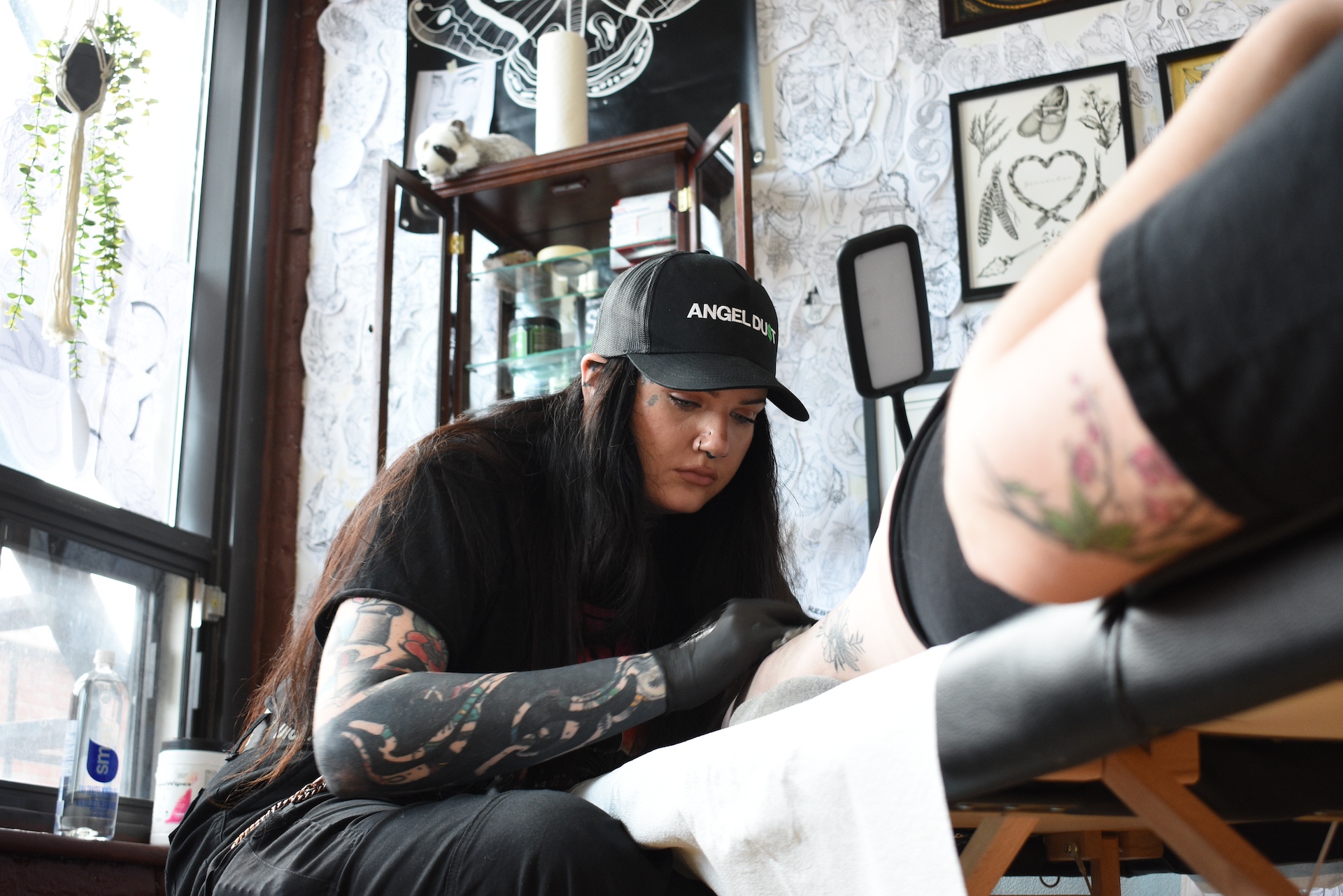
Terry Dactel tattoos a client at Hawthorn tattoo studio. Photo by Mackenzie Sanche.
Dactel stresses that there needs to be more space for BIPOC artists in the industry, especially considering that tattooing is a concept that was culturally appropriated from Black and Indigenous traditional practices.
Dactel and Phylo explain that their lived experience also allows for a sense of trust within their communities that is difficult to fake. “We inherently have lived experience of what it means to be BIPOC people who have entered in spaces that were not meant for us.”
The owners of Hawthorn are proud of their tattoo studio’s success, with clients often telling them how comfortable, happy, safe and cozy they feel.
Phylo insists that gender and skin colour do not affect competency. “We’re just as good and we’ll care for you, because we know how it feels not to be cared for.”
